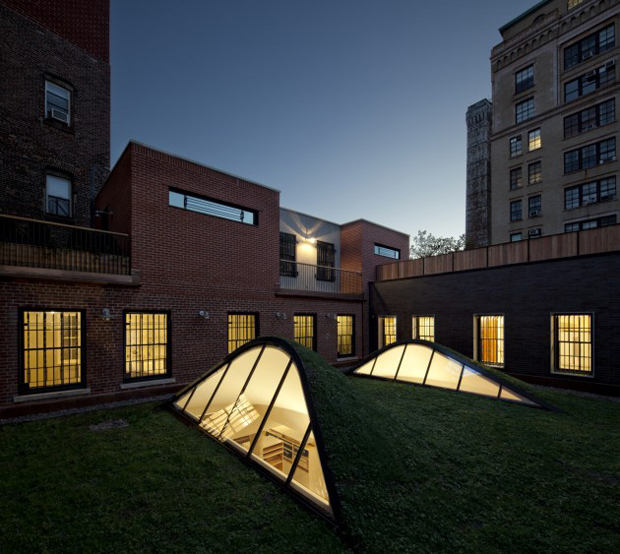
Lichtenstein's New York home gets a makeover
The pop artist's Greenwich Village beautiful live/work space is reworked by Brooklyn's Caliper Studio
The late, great American pop artist Roy Lichtenstein was born in Manhattan in 1932, and died there in 1997. During the 1980s he converted a garage and metalworks in Greenwich Village into his own studio and apartment. The Lichtenstein Foundation now oversees the studio, while the artist's widow, Dorothy, continues to reside in the living quarters.
It's a beautiful bit a real estate and a prime piece of art history, but it was getting a bit tired. So, in 2007, Dorothy and the estate decided the place needed a bit of work. However, while the roof and the kitchen had aged somewhat, it was their imperative to preserve Roy's workspace. Caliper Studio, a Brooklyn firm offering both architectural services and customised metal fabrication were tasked with both jobs.
{media1}
Caliper took the mish-mash of buildings in hand, adding climate controls and preservation measures to the studio, while installing a roof garden, and refurbishing the penthouse office and guest quarters.
Caliper worked concert with landscapers VertNY, planting sedum on the roof, building up a couple of hillocks, and fitting a viewing platform and some decking. This area now serves as an urban sculpture garden with Lichtenstein's al fresco creations, Brushstrokes and Endless Drip, installed there. Meanwhile, a pair of steel and glass 'eyebrow-shaped' skylights bring extra light into the studio below. The windows were formed by spraying concrete onto brows' metal arches.
{media2}
The new additions - the guest apartment and penthouse - are fashioned out of dark grey brickwork with timber louvres. "The quality of the space and its character has been maintained through original artifacts including the artist's built-in wall easel system and paint-splattered floor," says Caliper.
Great job. We can imagine these improvements suit both Dorothy's domestic needs, and the wants of the pop art historian. For more on this, see Caliper's site, and for further insight into Roy's life and work, take a look at our Pop book.